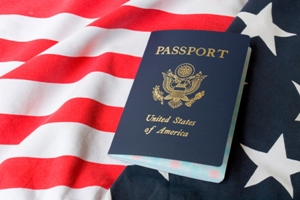The Biden administration plans to change many aspects of the US immigration system. This immigration plan involves several steps. In this article, we will take a closer look at what changes in the US immigration system are in question.
As we know, President Trump pursued the goal of limiting legal and illegal immigration to the United States. Most of the changes made by Trump have been implemented through executive orders. This will make it easier for the new administration to weaken them.
Some measures will be quickly reversed, but others may take months or years to reverse.

The Biden administration says it will take the following steps within the first 100 days:
- Will repeal Trump’s social burden rule
The social burden rule existed as one of the reasons for not allowing new permanent residents to move to the United States. This means that foreign citizens cannot get a green card if they depend on public goods. The Trump administration has tightened this rule. Biden says he will return to the old rules. This will likely eliminate the need to file Form I-944 (Declaration of Self-Sufficiency) to adjust the status of applicants. Most new immigrants will likely need to file Form I-864 (Affidavit of Support).
- Preserve DACA and Protect Families
DACA policy was created in 2012. This policy protects some undocumented immigrants who were brought to the United States by their parents. The Trump administration has made several attempts to derail and close the program.
Biden intends to restore DACA to its original state. The President wants to order USCIS to accept new DACA applications. He also announced his intention to explore all legal options for protecting families from separation. Biden wants to establish a path to citizenship for DACA recipients and some of their families.
- Will lift the travel ban
A 2017 executive order from the Trump administration restricted travel to the United States to citizens of 13 countries, most of which are Muslim or African. Biden intends to repeal this Ordinance and will rely on current immigration laws for the entry of foreign nationals.
- Stop construction of the border wall
Biden is going to end the “state of emergency” declared by President Trump in order to get money from the Department of Defense to build the wall. The Biden administration is supporting border security, such as improving inspection infrastructure at ports of entry.
- Will change the asylum policy
The Trump administration has worked to limit the pool of asylum seekers in the United States. The Biden administration wants to restore the US’s role as a safe haven for people fleeing persecution. Biden wants to raise the annual threshold for admitting refugees to 125,000. But that will most likely require legislative assistance through Congress.
Biden will end policies that separate parents from children at the border or keep asylum seekers waiting outside the United States. He also reaffirmed that asylum is a means to avoid persecution in countries that are intolerant of the LGBT community.
- Re-establish rules for priority protection
The Biden administration is expected to end the enforcement policy. This policy includes measures against people who have not been convicted of a serious criminal offense. The President will focus the attention of the US Immigration and Customs Enforcement (ICE) on threats to public and national security. This will restrict deportation to persons who have committed criminal offenses.
- Provide protection for immigrant veterans
In recent years, some immigrant military veterans have been deported. Biden says he will create a procedure to bring these people back to the US.
- Optimizes the naturalization process
Delays in naturalization are close to a record. According to the latest USCIS data, more than 740,000 permanent residents are awaiting a decision on the N-400 citizenship application. The Trump administration recently updated its citizenship test and tried to increase application fees. Biden wants to streamline and improve the naturalization process to make it more accessible to qualified green cardholders. He can direct resource reallocations within USCIS to prioritize naturalization cases.
Within the first 100 days, the Biden administration is also expected to revise the Temporary Protected Status (TPS) program, end Trump’s ban on green cards, and may expedite status adjustments for key workers such as healthcare workers helping to fight the pandemic. All of these actions can be carried out through executive action or policy changes under the supervision of the president. Therefore, the list of the above actions is achievable during the first 100 days of the President-elect’s office.

Long-term immigration reform plans
Biden backed the Comprehensive Immigration Reform Bill of 2013, which failed in the House of Representatives. Biden’s immigration plan will likely include many of the same proposals.
Many of his long-term immigration goals are based on maintaining family unity. The current system makes it difficult for many families to stay together during the immigration process. Biden is aware of this problem and hopes to improve many of the existing laws.
Reconstruction of the temporary work visa system (H-1B)
Biden wants to work with Congress to reform the temporary visa system to establish a wage distribution process and create enforcement mechanisms. In other words, so that it matches the labor market and not be used to lower wages. In addition, it will also support an increase in the number of visas for highly skilled workers and the removal of country restrictions on the issuance of work-based visas.
Moreover, this legislation will also benefit the families of holders of work visas such as H-1B. Biden is likely to reverse the Trump administration’s measures to revoke work permits for spouses of H-1B visa holders.
Extension of work-based visas
The number of visas issued for employment purposes is currently limited to 140,000 per year. Biden intends to seek an increase in this number. It will also exempt recent graduates of US STEM graduate programs from this restriction. Biden wants international graduates of doctoral programs in the US to be issued a green card showing their degree. He believes that the loss of these highly skilled workers is detrimental to the economic competitiveness of the United States.
Building a path to citizenship for undocumented immigrants
An estimated 11 million people live in the United States without immigration status. They may not have documents, but they make a significant contribution to the economy. However, many have family members who are US citizens or permanent residents. The Biden administration will explore ways to legalize this group so that they can contribute more fully to American society. Despite the fact that now there are very limited ways to legalize illegal immigrants, the official program will allow many of them to come out of the shadows.
There will likely be many changes in the next four years. While much of Biden’s short-term immigration plan will focus on reversing the changes in the Trump era, meaningful progress is on the agenda.





